Ultrafast Photoalignment: Recording a Lens in a Nanosecond
Abstract
:1. Introduction
2. Experimental Set-Up
3. Materials and Characterization
4. Printing Diffractive Waveplates (DW) in PAAD-27 with 532 nm Pulse
5. Conclusions
Acknowledgments
Author Contributions
Conflicts of Interest
References
- Tabiryan, N.; Roberts, D.; Steeves, D.; Kimball, B. 4G Optics: New technology extends limits to the extremes. Photonics Spectra 2017, 51, 46–50. [Google Scholar]
- Tabiryan, N.V.; Nersisyan, S.R.; Steeves, D.M.; Kimball, B.R. The promise of diffractive waveplates. Opt. Photonics News 2010, 21, 41–45. [Google Scholar]
- Tabiryan, N.V.; Roberts, D.; Serabyn, E.; Steeves, D.; Kimball, B. Superlens in the skies: Liquid-crystal-polymer technology for telescopes. SPIE Newsroom 2016. [Google Scholar] [CrossRef]
- Tabiryan, N.V.; Serak, S.V.; Nersisyan, S.R.; Roberts, D.E.; Zeldovich, B.Y.; Steeves, D.M.; Kimball, B.R. Broadband waveplate lenses. Opt. Express 2016, 24, 7091–7102. [Google Scholar] [CrossRef] [PubMed]
- Tabiryan, N.V.; Serak, S.V.; Roberts, D.E.; Steeves, D.M.; Kimball, B.R. Thin waveplate lenses of switchable focal length new generation in optics. Opt. Express 2015, 23, 25783–25794. [Google Scholar] [CrossRef] [PubMed]
- Woon, K.L.; O’Neill, M.; Vlachos, P.; Aldred, M.P.; Kelly, S.M. Highly birefringent nematic and chiral nematic liquid crystals. Liq. Cryst. 2005, 23, 1191–1194. [Google Scholar] [CrossRef]
- Dąbrowski, R.; Kula, P.; Herman, J. High birefringence liquid crystals. Crystals 2013, 3, 443–482. [Google Scholar] [CrossRef]
- Chigrinov, V.G.; Kozenkov, V.M.; Kwok, H.S. Photoaligning: Physics and Applications in Liquid Crystal Devices; Wiley VCH: Weinheim, Germany, 2008. [Google Scholar]
- Ichimura, K. Photoalignment of liquid-crystal systems. Chem. Rev. 2000, 100, 1847–1873. [Google Scholar] [CrossRef] [PubMed]
- Nersisyan, S.R.; Tabiryan, N.V.; Steeves, D.M.; Kimball, B. Optical axis gratings in liquid crystals and their use for polarization insensitive optical switching. J. Nonlinear Opt. Phys. 2009, 18, 1–47. [Google Scholar] [CrossRef]
- Nikolova, L.; Ramanujam, P.S. Polarization Holography; Cambridge University Press: Cambridge, UK, 2009. [Google Scholar]
- Nersisyan, S.R.; Tabiryan, N.V.; Mawet, D.; Serabyn, E. Improving vector vortex waveplates for high contrast coronagraphy. Opt. Express 2013, 21, 8205–8213. [Google Scholar] [CrossRef] [PubMed]
- Nersisyan, S.R.; Tabiryan, N.V.; Steeves, D.M.; Kimball, B.R. Fabrication of liquid crystal polymer axial waveplates for UV-IR wavelengths. Opt. Express 2009, 17, 11926–11934. [Google Scholar] [CrossRef] [PubMed]
- De Sio, L.; Roberts, D.; Liao, Z.; Nersisyan, S.; Uskova, O.; Wickboldt, L.; Tabiryan, N.; Steeves, D.; Kimball, B. Digital polarization holography advancing geometrical phase optics. Opt. Express 2016, 24, 18297–18306. [Google Scholar] [CrossRef] [PubMed]
- Dabrovski, R. Isothiocyanates and their mixtures with a broad range of nematic phase. Mol. Cryst. Liq. Cryst. 1990, 191, 17–27. [Google Scholar]
- Nersisyan, S.R.; Tabiryan, N.V.; Steeves, D.M.; Kimball, B.R. Characterization of optically imprinted polarization gratings. Appl. Opt. 2009, 48, 4062–4067. [Google Scholar] [CrossRef] [PubMed]
- Sarkissian, H.; Tabirian, N.; Park, B.; Zeldovich, B. Periodically aligned liquid crystal: Potential application for projection displays. Mol. Cryst. Liq. Cryst. 2006, 451, 1–19. Available online: http://oai.dtic.mil/oai/oai?verb=getRecord&metadataPrefix=html&identifier=ADA428000 (accessed on 10 August 2004). [CrossRef]
- Crawford, G.P.; Eakin, J.N.; Radcliffe, M.D.; Callan-Jones, A.; Pelcovits, R.A. Liquid-crystal diffraction gratings using polarization holography alignment techniques. J. Appl. Phys. 2005, 98, 123102. [Google Scholar] [CrossRef]


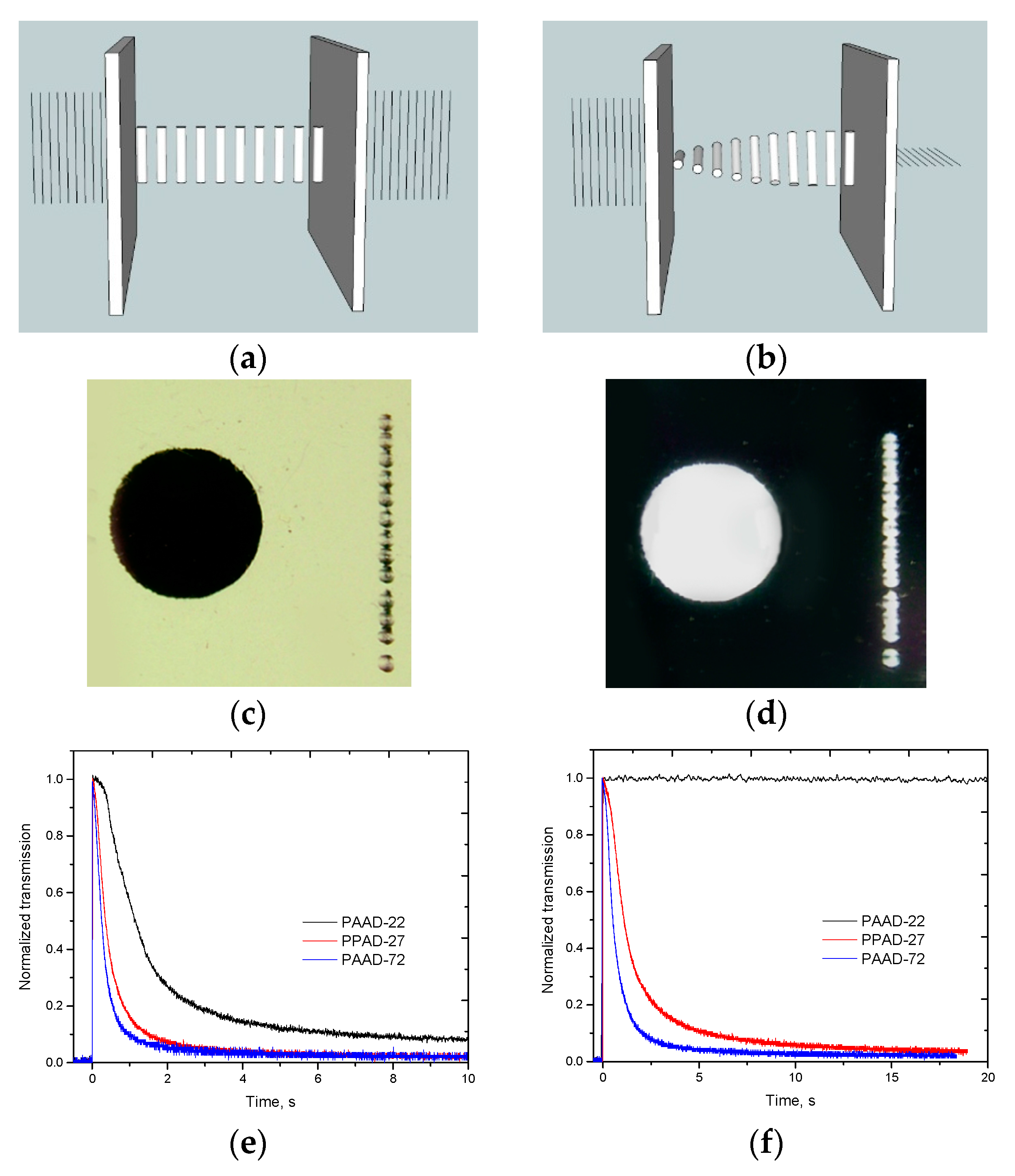
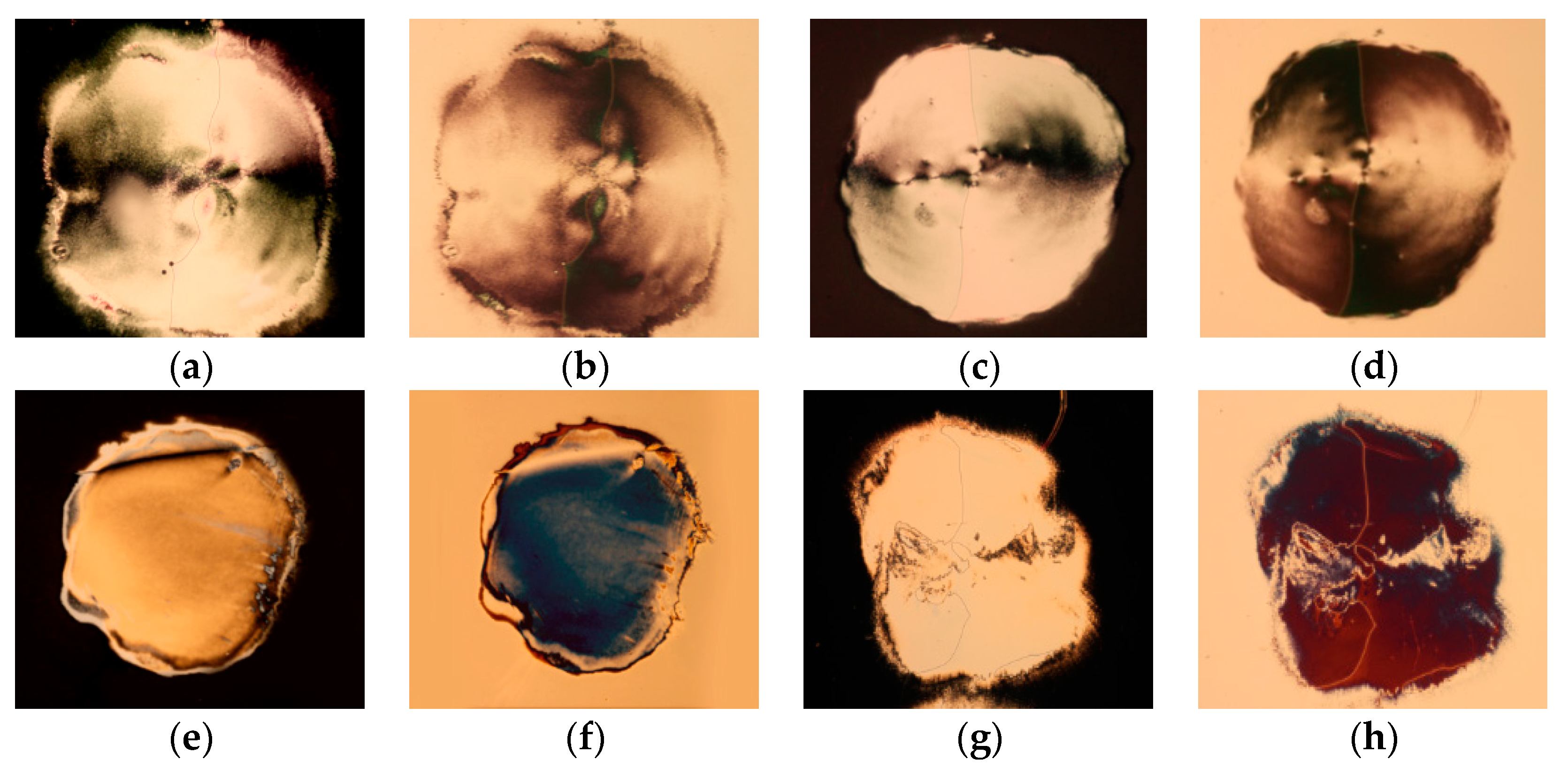
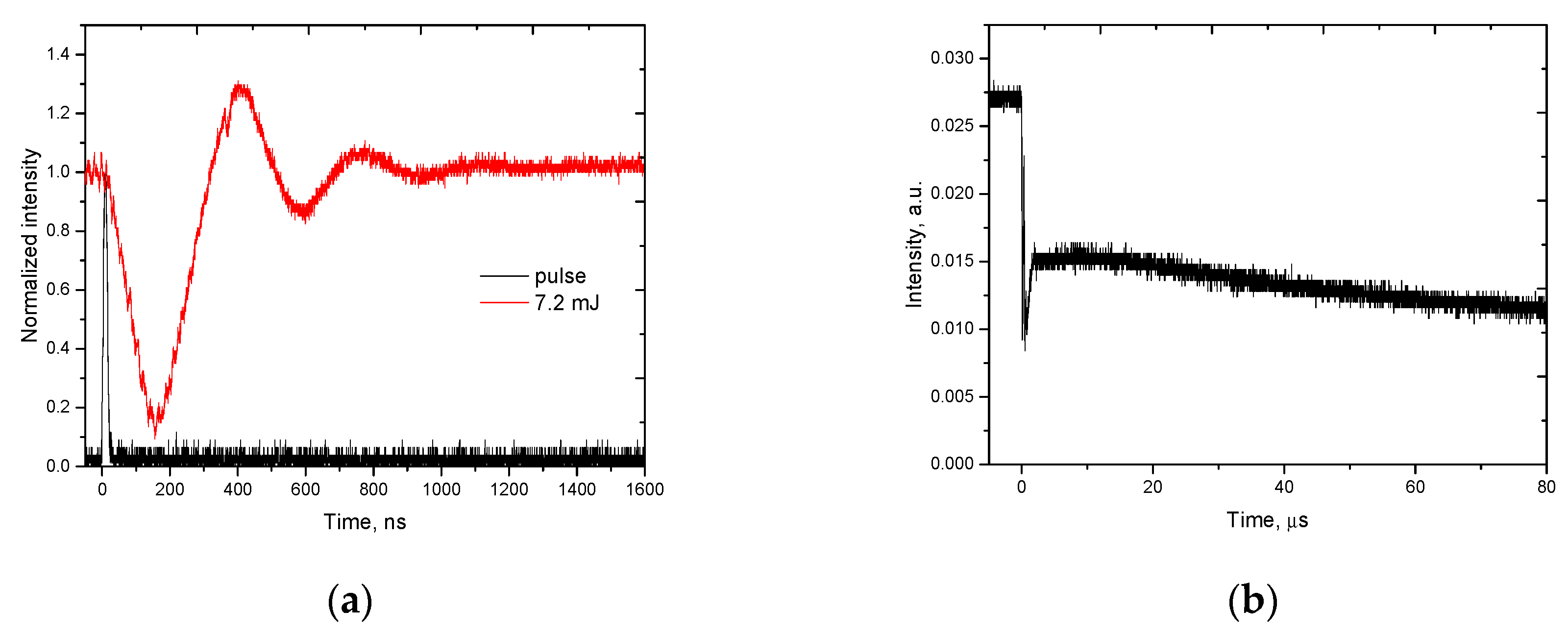
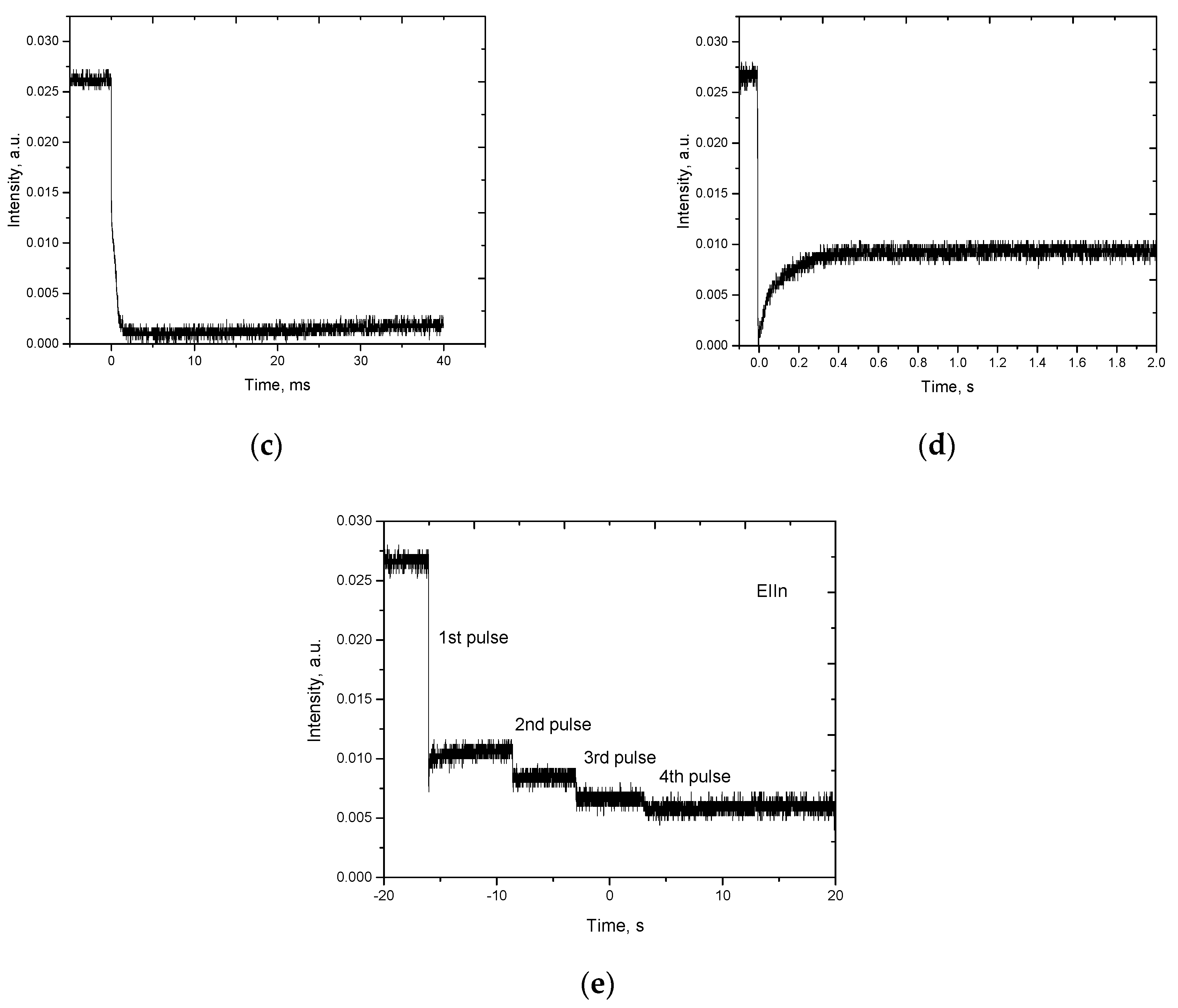
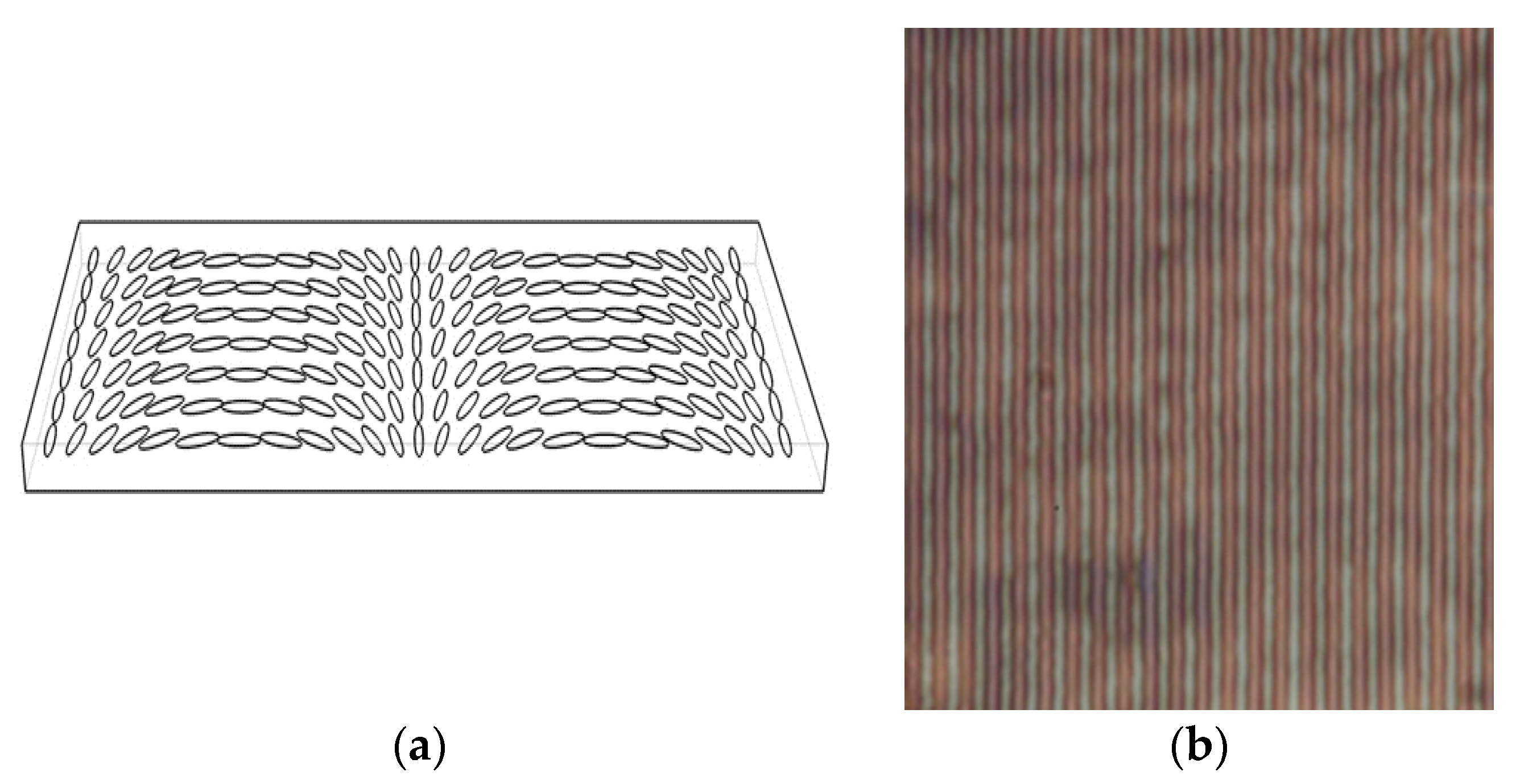
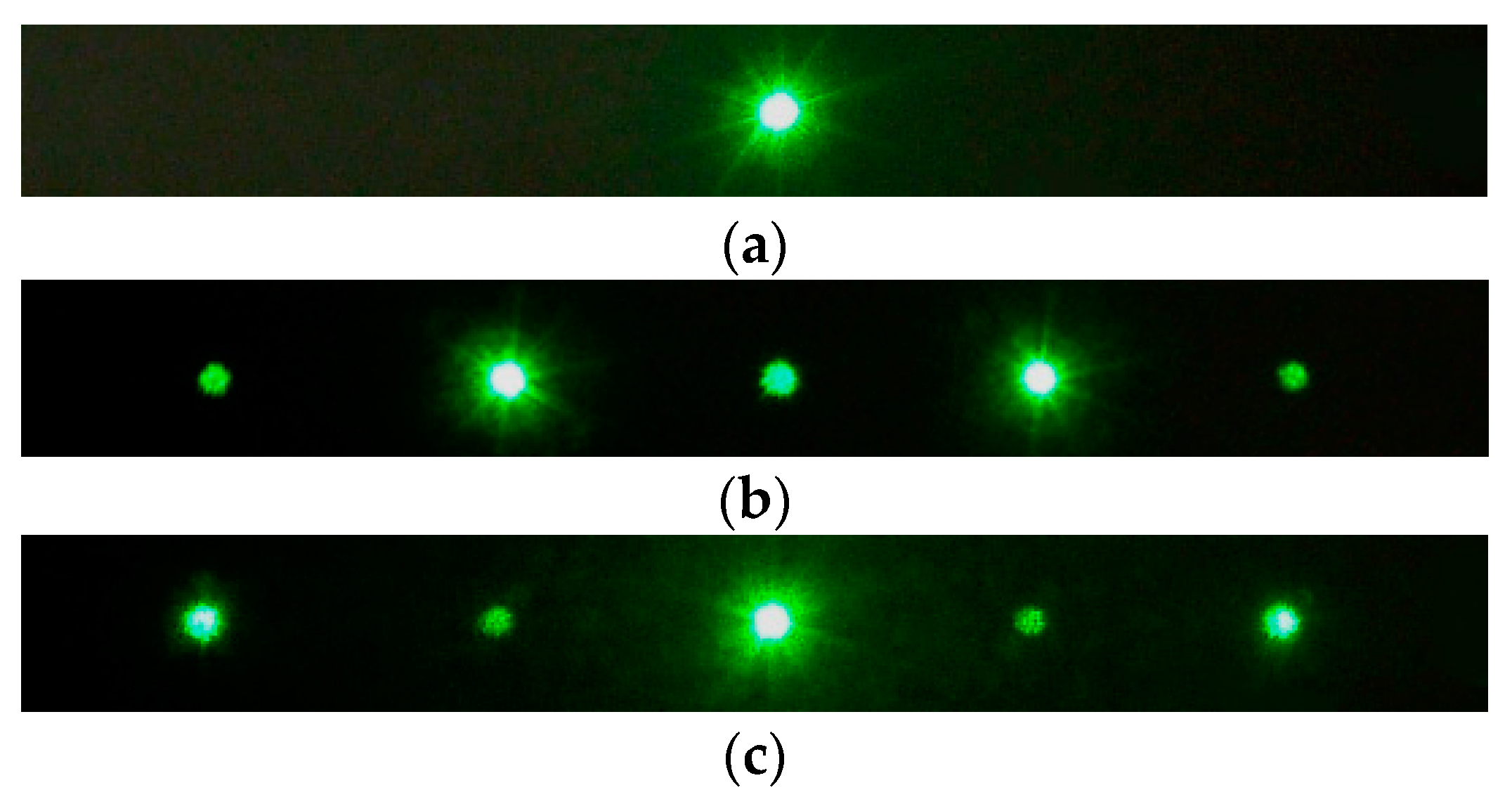
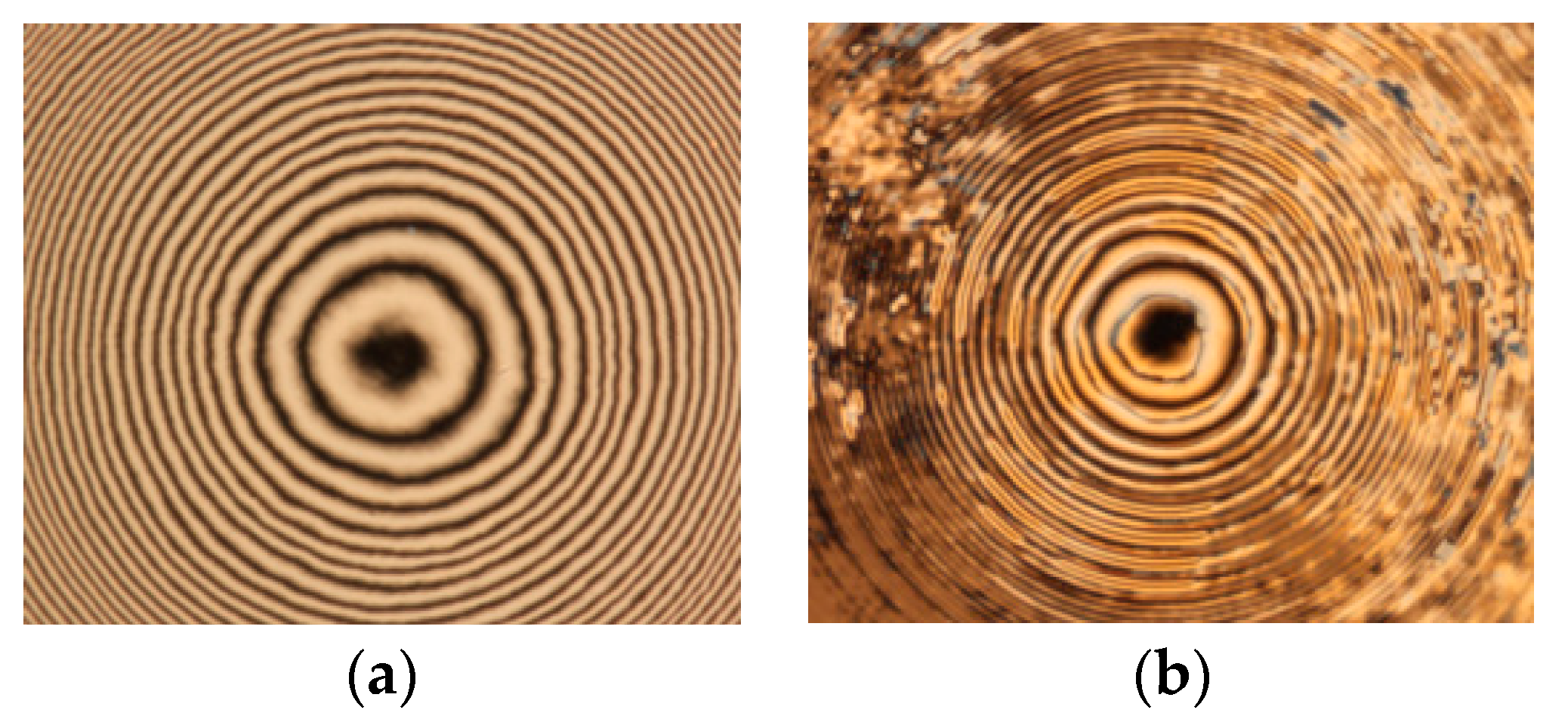
| P−2/Pin | P−1/Pin | P0/Pin | P+1/Pin | P+2/Pin | |
|---|---|---|---|---|---|
| Template CDW | 0.5% | 44.6% | 1.4% | 39.6% | 0.2% |
| LC CDW | 4.1% | 0.8% | 69.7% | 0.4% | 2.8% |
© 2017 by the authors. Licensee MDPI, Basel, Switzerland. This article is an open access article distributed under the terms and conditions of the Creative Commons Attribution (CC BY) license (http://creativecommons.org/licenses/by/4.0/).
Share and Cite
Serak, S.V.; Bunning, T.J.; Tabiryan, N.V. Ultrafast Photoalignment: Recording a Lens in a Nanosecond. Crystals 2017, 7, 338. https://doi.org/10.3390/cryst7110338
Serak SV, Bunning TJ, Tabiryan NV. Ultrafast Photoalignment: Recording a Lens in a Nanosecond. Crystals. 2017; 7(11):338. https://doi.org/10.3390/cryst7110338
Chicago/Turabian StyleSerak, Svetlana V., Timothy J. Bunning, and Nelson V. Tabiryan. 2017. "Ultrafast Photoalignment: Recording a Lens in a Nanosecond" Crystals 7, no. 11: 338. https://doi.org/10.3390/cryst7110338





